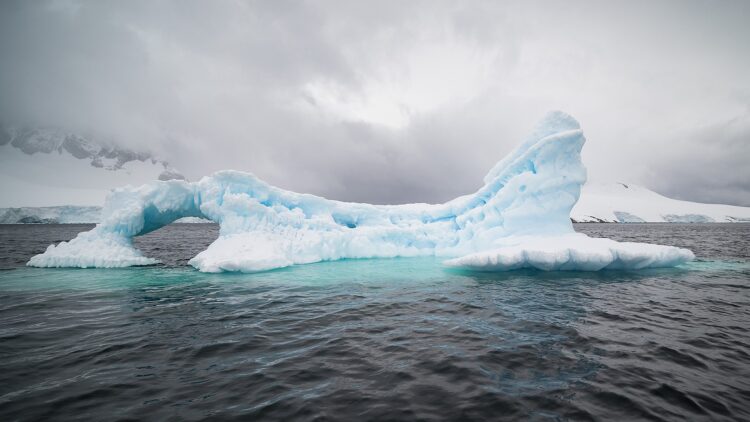As polar glacial melt accelerates due to climate change, scientists are proposing an ambitious geoengineering project in Antarctica. It involves the construction of giant underwater “curtains” designed to shield ice sheets from water ocean currents. While this project aims to prevent catastrophic sea levels, it has sparked considerable controversy over potential geopolitical conflicts and implications for international treaties governing the region.
Geoengineering: The controversial proposal for underwater curtains in Antarctica
According to a recent study conducted by geophysicists at the University of Lapland in Finland, the proposed project entails erecting a 328-foot-high floating curtain anchored to the sea floor. It will stretch 49.8 miles around vulnerable ice sheets, including the West Antarctic Ice Sheet. The intention is to mitigate marine heat that’s affecting glaciers, thereby enhancing their stability and density.
Estimated costs for this endeavor range between $40 to $80 billion, with an additional $2 billion needed for yearly maintenance. While researchers acknowledge the doubts about the project’s effectiveness, they contend that it merits investigation as a preventive measure against rising sea levels, which are projected to incur costs of $40 billion annually from the year 2100 onwards due to climate impacts.
However, this proposal has led to fierce debate within scientific and policy communities about the ethical implications, environmental impacts, and geopolitical ramifications of such an intervention.
Exploring the international implications of this ambitious project
Legal expert Dr. Akiho Shibata and political scientist Dr. Patrick Flamm have expressed concerns that the implementation of this project could undermine the Antarctic Treaty System, which was established in 1959 to prohibit military activity, mining, and nuclear testing in Antarctica.
“In the current climate, with growing international rivalry and great power strategic competition, it would be an extremely unlikely diplomatic achievement to secure the level of international cooperation… required for the proposed glacial geoengineering infrastructures,” they write in a joint statement.
In essence, these underwater curtains could generate international tensions by appearing to favor certain nations, especially regarding environmental responsibilities. Countries taking initiative in this project risk compromising the interests of those most at risk of rising sea levels, which could destabilize alliances.
Professor John Moore, a geophysicist involved in the proposed project, recognizes the sincere intent of saving glaciers, but he also acknowledges the intricate legal ramifications involved. Critics also question the ecological impacts of geoengineering, expressing skepticism about whether these interventions are compatible with the treaty’s prohibitions against disruptive activities.
Could this project bring down the curtains on climate change or international relations?
Additionally, the hypothetical installations of these underwater curtains in Antarctica could become targets for sabotage or political subterfuge, thereby endangering the survival of low-lying nations against rising sea levels. This threat underlines the importance of strengthening security measures for any proposed structures in a region intended to remain free from military conflict and surveillance.
Looking back on history, experts point to the successful resolution of previous territorial disputes over mineral extraction through the 1991 Protocol on Environmental Protection to the Antarctic Treaty. However, in today’s heightened climate of international rivalry, the risk of transforming Antarctica into a battlefield for geopolitical conflicts looms larger than ever before.
All in all, while geoengineering projects like this one are an innovative response to climate challenges, they also pose critical questions about governance, environmental impact, and escalations in international tensions. Without consensus among nations, the chances of implementing these curtains may remain uncertain at best.
Ultimately, this project reflects humanity’s urgent need for innovation in the face of climate change. However, they also open complex discussions on ethics, geopolitics, and environmental responsibility. Achieving global cooperation is crucial for any hope of success.

